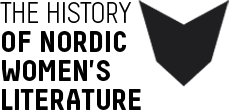The far too rapid and crude modernisation and urbanisation of Iceland had psychological consequences and caused cultural upheavals. The Icelandic women writers of the period 1930-1965 attempted to analyse the processes they were exposed to, and attempted to trace connections back and forth in time in order to find a meaning in their strange daily lives.Many issues were discussed by women during those years, in a rejection of the post-war ideology of women as carers and housewives. There were also many small out-bursts of frustration and opposition to the arrogance and obvious misogyny of the male literary elite. But the arrogance and contempt nevertheless had an effect, and the younger women’s literature of the 1950s and 1960s is often characterised by caution, distance, and self-censorship. Ambitious debuts were few and far between, and the women’s novels became in general shorter, sparer – every single word was carefully weighed.The short stories of Unnur Eiríksdóttir, Drífa Viðar, and Ásta Sigurðardóttir are all marked by linguistic self-awareness, formal inventions, and absurd or grotesque touches. Modernism was emerging, and it was the young urban women who prepared the way for it.
Tag: Gender Roles
With the Modern Breakthrough in the Nordic region in the 1880s, feverish female activity could be perceived everywhere. Women joined together in national women’s societies, working doggedly and energetically to put women’s issues on the agenda of the legislative authorities in order to ensure the implementation of laws. Writing in newspapers, journals, and literary works, it was young middle-class women – well-versed in languages, conversation, and good manners – who presented issues pertaining to women’s status as a social problem.Many women writers of the Modern Breakthrough experienced the new departure in the form of personal and artistic failure. They broke their backs or their pens on the modern paradox. But the emancipation project was not abandoned. For the women who continued to write for the rest of the century, and for those who made their debut around the turn of the century, the tension between ideals and disillusion, between movement and moment, was merely put in a different form.
Emergence of a Female Public Arena in Norway
City and Text
Female writers of the Romantic movement did not have the academic training in literary tradition enjoyed by the majority of their male colleagues; this did not, however, mean that they approached literature with no prior aptitude whatsoever. If anything, being voracious readers they were stuffed with the male writers’ descriptions of the world and of themselves. They had an overwhelming urge to supplement and correct these pictures of women and the world according to their own minds. The female writers displayed a strong sense of having something new to tell.They were, naturally, aware that they were inscribing themselves in a literary institution that neither bid them welcome to the profession nor accepted their texts as authoritative. It was not easy to win readers for the images of woman and world that the female writers were attempting to project. Furthermore, the gender dualism and idealisation of intimate sphere-femininity of romanticism meant that the women writers struggled to integrate their writing self in their female self-image.
Virtue is discussed everywhere in eighteenth-century women’s literature; and we do not have to look very far in the contemporaneous references to women authors and writers before we find feminine virtue cited as justification for her writing and the purpose of her work. Whether a writing woman’s role is that of well-read lady, confidential diarist, religious confessor, or experienced writer, feminine virtue is and will remain her destiny.
The Female Pattern in Folk Poetry and Folklore Collection
In earlier times the folktales known as “Narrationes Lubricae”, salacious stories, were narrated by adult informants in the rural areas of Norway, in the villages. There are many women registered among the adult informants. The crude stories were/are by no means the sole reserve of male company.We know the names of approximately two-thirds of those who narrated the comic erotic material, and of these exactly one half are women. This is perhaps surprising. Many consider the folktale and, one would have thought, the cruder type in particular, to be more of a male-centric form. We connect female informants primarily with ballads, in which music and aesthetics are in the foreground.
While the new women’s movement in the course of the 1970s brought the reader out and made her a writer, confessor, or debater in a large-scale discourse on life as a woman and gender roles, the women and men of the 1980s literary community formulated the relationship between reader and writer in other terms. The scene changed quickly and dramatically: experience and conversation were no longer at the centre; exploration and aesthetics had supplanted them.A new professionalisation of literature took place, and the young, well-educated readers were not looking for answers or validation in literature but rather experiences, temptation, beauty, and insight. And they flocked around the young poets at the well-illuminated cafés that soon replaced the old pubs and watering holes.
The Swedish author Victoria Benedictsson felt like “a pariah, a mangy dog”. Before she settled on the pseudonym Ernst Ahlgren, she had long vacillated between the alternatives ‘Tardif’, the tardy, and ‘O. Twist’, the unwelcome. Her authorship is based on this conflict of identity. “I am a woman. But I am an author – am I not, then, something of a man as well?”, she wonders in 1888. Her own life was short and ended tragically.But for a period of a few years in the middle of the 1880s she was astonishingly productive. Her works spoke to the core of the morality controversy’s debate over female identity. Her intellectual vitality during this short period stands in contrast to the image of a sickly, doomed person, which has dominated her posthumous reputation.

